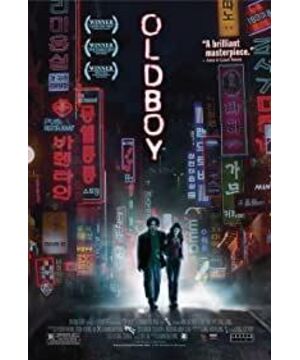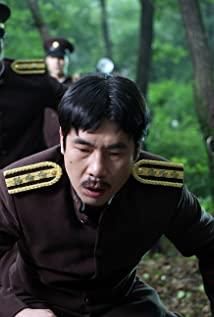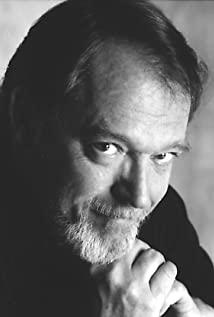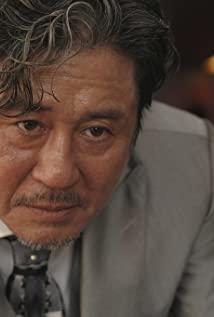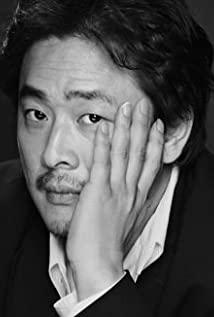of Violence The first impression of aesthetics of violence was the scene in Japanese director Shunji Iwai's "Swallowtail Butterfly". A group of desperadoes buried people in the forest late at night, and pulled out a black tape from the bloody internal organs; the male protagonist fought and escaped in the enemy car, the car collided with another car, the driver turned his head back, his facial features were completely dislocated and deformed . I am not fond of violent or even disgusting scenes, but every time I re-watch "Swallowtail Butterfly", I always escape a section of the car waiting for the scene of a person with a dislocation of the face to appear. I don't like watching the scene where they take the tape from the gut, but it is acceptable, because it is precisely because of this scene that I think the slow rock song "MY WAY" of Elvis playing on the truck when leaving the forest is so moving.
Violent aesthetics emphasizes relaxation, muscle tension, rapid heartbeat, and increased adrenaline secretion. After a period of time, the ethereal and ethereal hymn is suddenly released, which makes people feel a kind of release and relief. The most appropriate metaphor is to learn in elementary school. The sentence-the heart that was originally like being crushed by a stone suddenly felt relieved. Under the guidance of this kind of thinking, Park Chan-wook's plot arrangement is characterized by the slackness of the Western film tradition (I don't want Kim Ki-duk's movie, the whole film has no ups and downs). Nervously pursuing the enemy, after discovering the clues, they connected to the ambiguous, quiet memories of the brown middle school. Immediately rushed to the climax of the film-Li Youzhen and Wu Daxiu's meeting on the top floor of the building revealed the truth.
There are two plots in the film where Wu Daxiu and the prison boss pull each other's teeth, both of which use the classical composer Relvardi's violin concerto "Winter". The strings are repeatedly tightened, creating tension in the plot.
The beauty of violence aesthetics does not care about the violence itself, but the cooperation of violence and the surrounding environment, plot, and even music to complete the aesthetic value.
Absurdism
The scene of Wu Daxiu fighting with a group of people in the corridor is very similar to the scene of the video game "Double Dragon" produced by a Japanese game company that has closed down in 1995, which was played when he was a child. The long shot, the plane, and even follow the potential of the game. The rule-a hero against a bunch of young guys, young guys must fight one by one, and then be knocked down one by one. My guess is that because the movie is adapted from a Japanese manga, it will bring some very "manga" scenes. For example, when Wu Daxiu raised his axe during a rally-using the red dotted line to trace the distance between the axe and the opponent's head, and another example is the film title is on the top of a tall building while he is pulling a male staff member holding a poodle dog-these techniques are quite different. Exaggeration and absurdity, with black humor. There is also a scene in the third part of the "Vengeance Trilogy," "The Kindly Gold"-when Gold was praying in the women's labor camp on a certain night, she looked back and exuded the divine light of angels. This is even more magical.
According to Cinewiki's data, "Park Chan-wook's entire college era was shrouded in a frenetic wave of "democratization". Political turbulence, frequent changes in power, and the upsurge of student democratic movements made Park Chan-wook inevitably bear the mark of that era. He can be said to be the "386" generation in the film industry. He is a bit leftist, influenced by Western democratic thought, and a bit cynical. In 2002, he joined the Democratic Labor Party of Korea, the most radical left-wing party in Korea."
It can be seen that Western thoughts have a great influence on Park Chan-wook. Eating full-form living octopus, the colony of ants that emerged from him while watching TV in the prison, the giant ants that his daughter imagined met on the train (can't help but remind people of Kafka's "The Metamorphosis"). The influence of Western absurdism on Park Chan-wook. Absurdism comes from the distrust and pessimism of the world, and it can be traced back to the tragedies of the West such as ancient Greece. Park Chan-wook admitted the influence of ancient Greek tragedies on "Old Boy". He said that what is portrayed in the film are actually human characters who struggle with fear in Shakespeare or ancient Greek tragedies. The tongue section is influenced by Oedipus's blinding eyes in "Oedipus the King". And in the speech he delivered when the "Old Boy" Cannes won the award, he said directly: "Cannes makes me feel that I am standing at the peak of my film life. As a world-wearist, is there only a decline in the rest of my life? "Of course, this award-winning speech may be humility, but Park Chan-wook did use absurd beauty, sublime beauty (fear, pessimism) and other aesthetics in his "revenge trilogy" including "Old Boy". Technique.
Christianity and Atonement
Evergreen Middle School is a Christian middle school, and Li Youzhen has a tattoo of a cross on his hip. In the prison, besides the oil painting of the male head of the hideous man, there is also a picture of an angel praying. Christian themes are common in Korean movies, and many famous directors will add this element to their movies, such as Kim Ki-deok, Lee Cang-dong, etc. It is said that one third of South Korean people believe in Christ. On the one hand, from a commercial point of view, many audiences will buy movie tickets for the face of Christianity; on the other hand, thinking about religion is a very important content for the director to increase the connotation of the movie.
I've seen Lee Cangdong's "Miyang" and Park Chan-wook's "The Kindly Gold" before. My conclusion is that the director is not trying to use Christianity to analyze some of the problems in the film (that is, atonement), but to use the film to look at Christianity from the outside.
Religion often plays a narcotic effect. The sandalwood admired in Buddhism is a narcotic thing. It is said that sandalwood is helpful for thinking, but it still makes people immerse in a certain state. The representative lotus flower of Buddhism-also contains the meaning of narcotic.
A line in the film is "Whether it is sand or stone, they will sink." This is a pessimistic thought. People cannot escape the mistakes they have made, even if the mistakes are small. This fits with the self-proclaimed world-weariness of simple and praising. World-weary people have no faith in the world but can look at religion in a simple way.
However, for some people, whether they are guilty or not is the reaction of God in their hearts—God has become an accomplice of people to wash away their guilt. Li Youzhen has an unfavorable relationship with her sister, but hopes to seek compensation for her sister's death from the pain of others. The murderer in "Miyang" can inspire God's will to forgive his crimes. Self-salvation has become a hint and anesthesia.
Regarding the atonement, Park Chan-wook said in an interview with "The Kindly Gold" that "the tofu cake is white, the candles and blood are red, and the gun and leather are black. This symbolizes purity, atonement and revenge, respectively."
"Old Boy" at the end. The ending scene also has a similar symbolism approach, the snow is white, Wu Daxiu's coat is black, and the falling snow gradually covers him. Finally, the daughter who appeared in red hugged him tightly...
View more about Oldboy reviews


